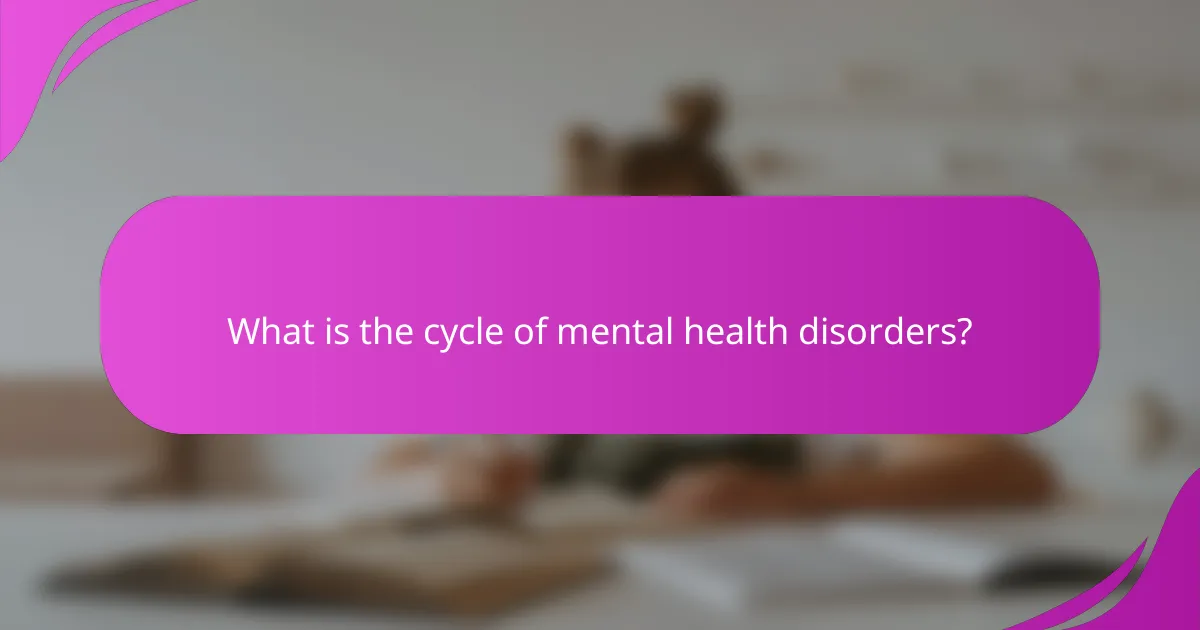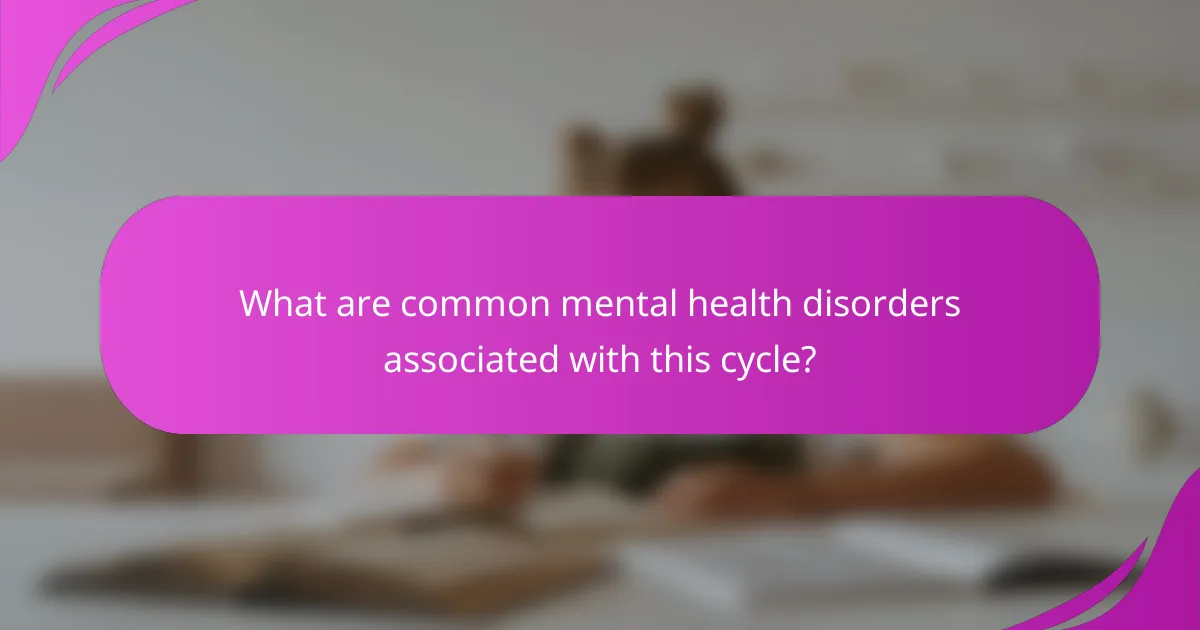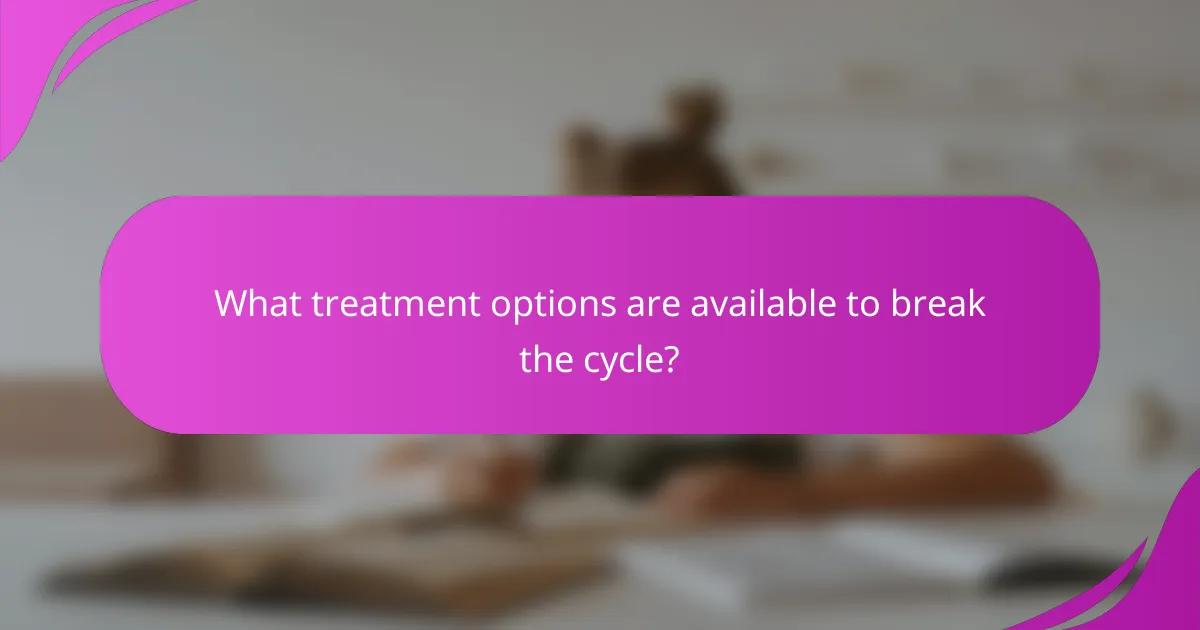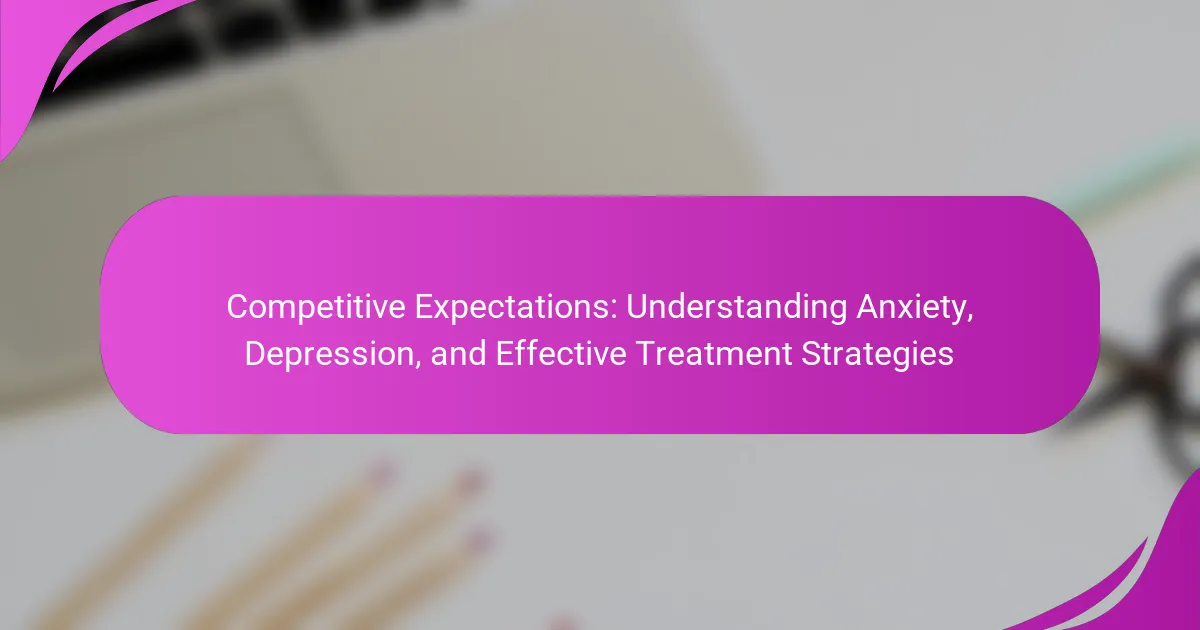Breaking the cycle of mental health disorders is crucial for achieving lasting well-being. This article explores the patterns of symptoms and behaviours, identifies effective treatment options, and highlights unique strategies for long-term change. It will discuss the importance of personalised plans, community support, and best practices to foster resilience and emotional health. Understanding these elements can empower individuals to disrupt negative cycles and improve their mental health.

What is the cycle of mental health disorders?
The cycle of mental health disorders involves recurring patterns of symptoms, behaviours, and emotional states. Breaking this cycle requires awareness, intervention, and support. Identifying triggers and implementing coping strategies can disrupt negative patterns. Treatment options like therapy and medication are essential for managing symptoms effectively.
How do repetitive behaviours contribute to mental health issues?
Repetitive behaviours can exacerbate mental health issues by reinforcing negative thought patterns and limiting adaptive coping strategies. These behaviours often stem from anxiety or stress, leading individuals to engage in actions that provide temporary relief but ultimately hinder progress. For instance, compulsive behaviours may temporarily alleviate anxiety but can result in increased distress over time. Addressing these cycles is crucial for effective mental health treatment, as breaking free from repetitive behaviours can foster healthier coping mechanisms and improve overall well-being.
What role does self-awareness play in breaking the cycle?
Self-awareness is crucial for breaking the cycle of mental health disorders. It allows individuals to recognise their patterns of behaviour and thought processes. By understanding these patterns, they can identify triggers and make conscious choices to alter their reactions. This unique attribute of self-awareness fosters personal growth and encourages the adoption of healthier coping strategies. As a result, individuals can achieve different outcomes by actively changing their approaches.

What are common mental health disorders associated with this cycle?
Common mental health disorders associated with repetitive behaviours include anxiety disorders, depression, obsessive-compulsive disorder, and post-traumatic stress disorder. These conditions often manifest through cycles of negative thinking and behaviour. Anxiety disorders can lead to avoidance behaviours, while depression may cause feelings of hopelessness. Obsessive-compulsive disorder involves repetitive thoughts and actions. Post-traumatic stress disorder can result in flashbacks and avoidance of reminders. Understanding these associations is crucial for breaking the cycle of mental health disorders.
How does depression manifest in repetitive patterns?
Depression often manifests in repetitive patterns, leading individuals to engage in the same behaviours while expecting different outcomes. This cycle can perpetuate feelings of hopelessness and frustration. One common pattern is negative thinking, where individuals ruminate on past failures, reinforcing their depressive state. Another pattern involves avoidance behaviours, where individuals retreat from social interactions or activities that once brought joy, further isolating themselves. Breaking these cycles requires awareness and active intervention strategies, such as cognitive behavioural therapy, which helps reframe thought patterns and encourages healthier behaviours. Recognising these patterns is crucial for effective mental health management.
What unique characteristics define anxiety disorders?
Anxiety disorders are defined by unique characteristics including excessive worry, avoidance behaviour, and physical symptoms. These disorders often lead to significant impairment in daily functioning. Common types include generalised anxiety disorder, panic disorder, and social anxiety disorder. Each type has distinct triggers and manifestations, yet they all share the core attribute of heightened anxiety response. Understanding these unique characteristics is crucial for effective treatment and management strategies.
How does obsessive-compulsive disorder illustrate this cycle?
Obsessive-compulsive disorder (OCD) exemplifies the cycle of mental health disorders through repetitive behaviours and intrusive thoughts. Individuals often engage in compulsions to alleviate anxiety caused by obsessions, but this relief is temporary. As a result, the cycle perpetuates, leading to increased distress and further compulsive actions. This unique attribute of OCD highlights the challenge of breaking the cycle, as the expectation of different outcomes from the same behaviours remains unfulfilled. Effective interventions focus on cognitive-behavioural therapy techniques to disrupt this cycle and promote healthier coping mechanisms.

What treatment options are available to break the cycle?
Effective treatment options to break the cycle of mental health disorders include therapy, medication, lifestyle changes, and support groups. Cognitive Behavioural Therapy (CBT) targets negative thought patterns, while medications like antidepressants can stabilise mood. Incorporating regular exercise and a balanced diet enhances overall well-being. Support groups provide community and shared experiences, fostering recovery. Each option addresses unique attributes of mental health, promoting holistic healing.
How does cognitive-behavioural therapy address repetitive behaviours?
Cognitive-behavioural therapy (CBT) effectively addresses repetitive behaviours by identifying and altering negative thought patterns. CBT helps individuals recognise triggers and develop coping strategies, leading to behavioural change. This therapeutic approach emphasises the connection between thoughts, feelings, and actions, allowing clients to break the cycle of mental health disorders. Techniques such as cognitive restructuring and exposure therapy are often employed to facilitate this process, promoting healthier behaviours over time.
What are the key techniques used in CBT?
Cognitive Behavioural Therapy (CBT) employs key techniques to help individuals break cycles of mental health disorders. These techniques include cognitive restructuring, behavioural activation, exposure therapy, and mindfulness practices.
Cognitive restructuring focuses on identifying and challenging negative thought patterns. Behavioural activation encourages engagement in activities that promote positive feelings. Exposure therapy gradually confronts fears to reduce anxiety. Mindfulness practices enhance awareness and acceptance of thoughts and feelings.
These techniques collectively empower individuals to alter their thought processes and behaviours, ultimately leading to improved mental health outcomes.
What unique approaches exist for managing anxiety disorders?
Innovative approaches for managing anxiety disorders include cognitive behavioural therapy, mindfulness practices, and exposure therapy. These methods break the cycle of anxiety by addressing thought patterns, enhancing self-awareness, and gradually confronting fears. Cognitive behavioural therapy focuses on restructuring negative thoughts, while mindfulness emphasises present-moment awareness to reduce anxiety. Exposure therapy systematically desensitises individuals to anxiety-inducing stimuli, fostering resilience. Each approach tailors strategies to individual needs, promoting effective management of anxiety disorders.
How can medication support treatment efforts?
Medication can significantly enhance treatment efforts for mental health disorders by addressing biochemical imbalances. It provides immediate symptom relief, allowing individuals to engage more effectively in therapy. For example, antidepressants can stabilise mood, while antipsychotics manage severe symptoms. Combining medication with psychotherapy often leads to better outcomes, as it supports behavioural changes and coping strategies. This integrated approach helps break the cycle of mental health disorders, promoting sustained recovery and improved quality of life.

What are the unique attributes of successful interventions?
Successful interventions in mental health disorders have unique attributes that enhance their effectiveness. These include personalised treatment plans, evidence-based practices, and continuous monitoring of progress. Personalised plans address individual needs, increasing engagement and adherence. Evidence-based practices ensure interventions are grounded in research, improving outcomes. Continuous monitoring allows for timely adjustments, maximising effectiveness. These attributes collectively break the cycle of ineffective treatments, fostering lasting change in mental health.
How does personalised treatment enhance recovery?
Personalised treatment significantly enhances recovery by tailoring interventions to individual needs. This approach addresses unique attributes of mental health disorders, such as specific symptoms and personal history. For instance, personalised plans may incorporate therapy types, medication adjustments, and lifestyle changes that resonate with the patient. As a result, individuals often experience improved engagement and better outcomes in their mental health journey.
What role does community support play in breaking the cycle?
Community support is crucial in breaking the cycle of mental health disorders. It provides individuals with a sense of belonging, reduces feelings of isolation, and fosters shared experiences. Supportive relationships can enhance resilience, encouraging individuals to seek help and adhere to treatment plans. Studies show that engaged communities lead to improved mental health outcomes, as social support serves as a buffer against stressors. Additionally, community initiatives can raise awareness and reduce stigma, making it easier for individuals to access necessary resources.

What are the rare but impactful strategies for long-term change?
To break the cycle of mental health disorders, consider rare strategies that foster long-term change. One impactful approach is integrating holistic therapies, which address emotional, physical, and spiritual well-being. Another is fostering community support networks that provide accountability and shared experiences. Engaging in creative expression, such as art or music therapy, can also unlock emotional barriers. Finally, practising mindfulness and meditation consistently cultivates resilience and self-awareness, essential for sustainable mental health improvement.
How does mindfulness contribute to breaking repetitive patterns?
Mindfulness helps break repetitive patterns by fostering awareness and promoting intentional responses. It encourages individuals to observe their thoughts and behaviours without judgment, allowing them to identify triggers and habitual reactions. This conscious awareness enables a shift from automatic responses to more thoughtful choices, reducing the cycle of mental health disorders. As a result, individuals can cultivate healthier coping mechanisms and develop resilience against stressors.
What innovative therapies are emerging in 2025?
Innovative therapies emerging in 2025 focus on personalised mental health treatments. Advances in neurofeedback and virtual reality therapy are breaking traditional cycles of mental health disorders. These therapies leverage real-time brain data and immersive environments to enhance treatment efficacy. Research shows that personalised approaches can increase engagement and improve outcomes for patients with chronic mental health issues.

What best practices can individuals implement immediately?
Individuals can implement several best practices immediately to break the cycle of mental health disorders. One effective approach is to establish a daily routine, which provides structure and predictability. Engaging in regular physical activity can significantly boost mood and reduce anxiety. Mindfulness techniques, such as meditation or deep breathing exercises, help in managing stress and enhancing emotional resilience. Additionally, seeking social support from friends or support groups fosters connection and reduces feelings of isolation. Lastly, setting realistic goals encourages progress and builds self-efficacy, which is essential in overcoming mental health challenges.
How can journaling aid in recognising patterns?
Journaling helps identify patterns by allowing individuals to reflect on thoughts and behaviours over time. This practice promotes self-awareness and highlights recurring themes that may contribute to mental health disorders. By documenting experiences, individuals can recognise triggers and responses, facilitating healthier coping strategies. Regular journaling can reveal insights that break the cycle of negative patterns, ultimately supporting mental well-being.
What lifestyle changes support mental health recovery?
Lifestyle changes that support mental health recovery include regular exercise, balanced nutrition, and consistent sleep patterns. Engaging in social connections and practising mindfulness are also crucial. These changes help break the cycle of mental health disorders by promoting overall well-being and resilience. Regular physical activity releases endorphins, which improve mood. A balanced diet provides essential nutrients that support brain health. Consistent sleep enhances cognitive function and emotional regulation. Mindfulness practices reduce stress and anxiety, fostering a more positive mindset.
What common mistakes should be avoided in treatment?
To avoid common mistakes in mental health treatment, recognise that repeating ineffective methods leads to stagnation. Focus on adapting strategies based on individual progress and feedback. Monitor changes regularly, and be open to new therapies or approaches. Collaboration with mental health professionals is crucial for effective treatment.



